
4 minute read
Beauty Subcultures
Figure 1: Stevenson, R. (1976) Soo Catwoman. Figure 2: Siouxsie Sioux (1978) Figure 3: Punk Girls (1975)
HISTORICAL CONTEXT
Advertisement
Looking at how makeup is used in subcultures to construct indentity, focusing on the Punk, New Romantic & E-Girl subcultures
Stone states that appearance is a vehicle which with which a person “announces his identity, shows his value, expresses his mood, or proposes his attitude” (1981: 193). In subcultures outer appearance is used to express a wearer’s identity and sense of self. Subcultures can be defined by the commonalities in the appearance of individuals, which represents them as a member of a subculture but also represents their personal sense of self. Makeup has an important role in subculture, by looking at how subcultures have used makeup can help us understand how makeup can be used to express identity.
“punk style was defined principally through the violence of its [style]” (Hebdige,1981:106). This was expressed through torn cut up clothing and DIY clothing. The violence of the punk style was echoed in the use of makeup in the subculture. Prominent figures in the punk subculture were Soo Catwoman (figure 1) and Siouxsie Sioux (figure 2) who both used makeup as part of their expression of punk. A signature look was black eye smoky eye makeup, the rough unpolished application of the eyeshadow expressing the punk attitude. Sharp shapes in the makeup looks such as Soo Catwoman’s pointed eyeshadowcommunicated the aggression of punk.
(Hebdige,1981:106)
Figure 2
PUNK

Figure 1
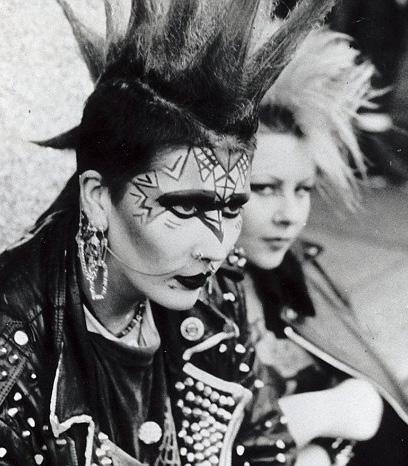

Figure 5

Figure 4
Figure 4: Sharah (1981) Steve Strange. Figure 5: Sharah (1980) David Bowie. Figure 6: Boy George (1980)
NEW ROMANTICS
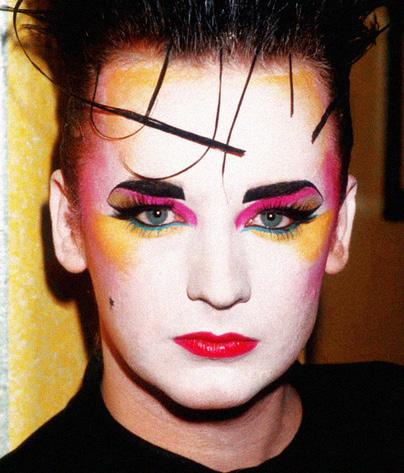
Figure 6
The New Romantic subculture developed as part of the club scene. It was born in the 80s at the Blitz Bar in London which was owned by Steve Strange (figure 4), an icon of the new romantics. Strange defined the New Romantics as people who created unique identities” (2009). Make up was an essential tool in creating these unique identities. Each makeup look was one of a kind, expressing the uniqueness of the individual. Many looks took inspiration from art like David Bowie (figure 5) who used large brush strokes mimicking a painting. Others took inspiration from modern art using bold vivid colours a bold geometric shape. The New Romantics used makeup as a “way of asserting an alternative identity that transcended labels whether they were personal, political, or sexual” (2018). New Romantics used make up to create a new identity that looked past labels and expressed a new sense of self.
Currently, a new emerging youth subculture is the E-girl. It is a makeup focused subculture that lives almost exclusively online. “It’s like the antithesis of the glam Insta model” states E-girl Vynique Moon for Dazed magazine (2019). The E-Girl subculture uses Makeup as a way to express themselves and standout on social media platforms which typically focus on
Figure 7
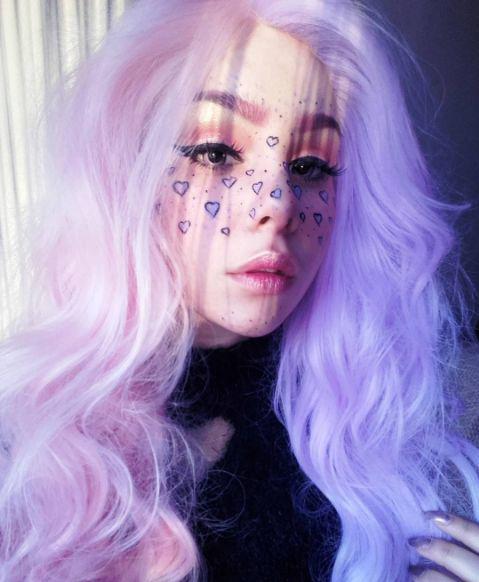
E-GIRL
Figure 7: Xen, H. (2017) Heart Makeup. Figure 8: Demont, N. (2018) Pink Makeup. Figure 9: Chan, S. (2020) E-Girl Makeup.
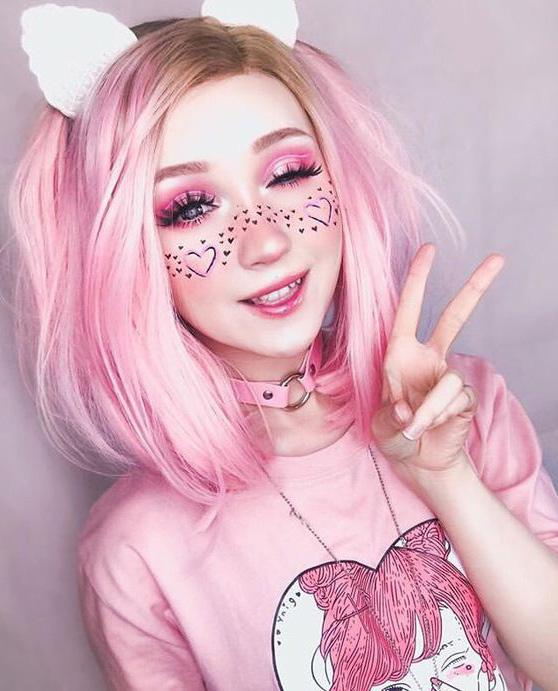
Figure 9
Figure 8
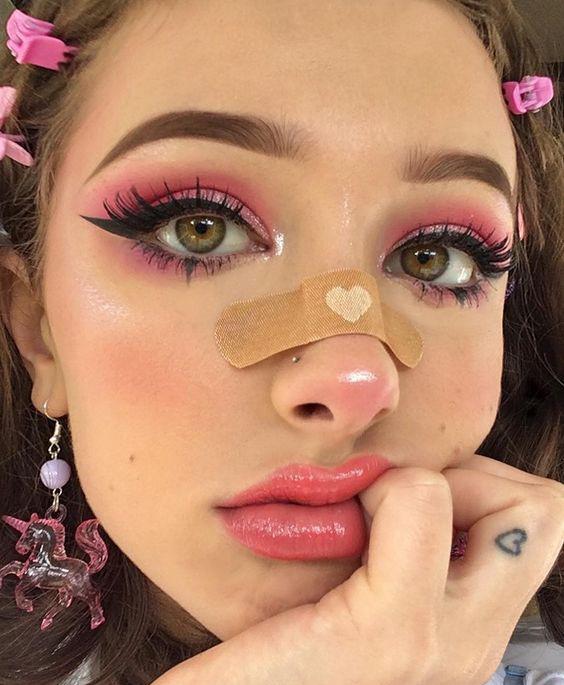
glamourized make up looks. The E-girl subculture is influenced by Asian culture particularly anime; eyeshadow is used commonly to replicate the large eyes of anime characters. The E-girl subculture points to a future where subcultures live predominantly in the online space.
Some see their subculture as the only representation of themselves as Muggleton quotes a punk sees themselves as a punk “through and through” (2000:82). However Muggleton proposes the idea of plural identities and that an individual can belong to a number of subcultures in a “endless succession of styles which the self is constructed” (2000:92). This shows that appearance in subcultures is used construct and represent a version of the self. However with the plurality of self, different aesthetic choices can represent different version or parts of the self. With technology it is easier than ever to change an virtual appearance, from social media pictures to virtual avatars, and with that also represent different versions of the self. Virtual avatars and social media filters allow people to rapidly change between appearances, allowing users to pick and choose identity. This shows the change that technology has peoples sense of self and appearance.








